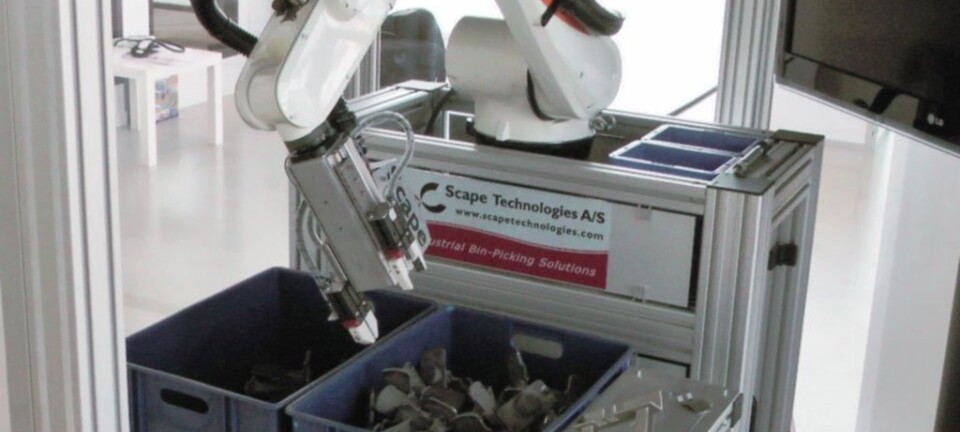An article from Norwegian SciTech News at SINTEF
Gets stroke patients back on their feet
A robot is now being built to help stroke patients with training, motivation and walking
Denne artikkelen er over ti år gammel og kan inneholde utdatert informasjon.
In Europe, strokes are the most common cause of physical disability among the elderly. This often result in paralysis of one side of the body, and many patients suffer much reduced physical mobility and are often unable to walk on their own.
These are the hard facts the EU project CORBYS has taken seriously. Researchers in six countries are currently developing a robotic system designed to help stroke patients re-train their bodies. The concept is based on helping the patient by constructing a system consisting of powered orthosis to help patient in moving his/her legs and a mobile platform providing patient mobility.
The CORBYS researchers are also working with the cognitive aspects. The aim is to enable the robot to interpret data from the patient and adapt the training programme to his or her capabilities and intention. This will bring rehabilitation robots to the next level.
Back to walking normally
It is vital to get stroke patients up on their feet as soon as possible. They must have frequent training exercises, and re-learn how to walk so that they can function as well as possible on their own.
Why a robot? “Absolutely, because it is difficult to meet these requirements using today’s work-intensive manual method where two therapists assisting the patient by lifting one leg after the other”, says ICT researcher Anders Liverud at SINTEF, which is one of the CORBYS project partners.
Robot-patient learning
CORBYS involves the use of physiological data such as heart rate, temperature and muscle activity measurements to provide feedback to the therapist and help control the robot. Do the patient’s legs always go where the patient want? Is the patient getting tired and stressed?
“The walking robot has several settings, and the therapist selects the correct mode based on how far the patient has come in his or her rehabilitation”, says Liverud. “The first step is to attach sensors to the patient’s body and let them walk on a treadmill. A therapist manually corrects the walking pattern and, with the help of the sensors, create a model of the patient’s walking pattern”, he says.
In the next mode, the system adjusts the walking pattern to the defined model. New adjustments are made and are used to improve optimisation of the walking pattern.
“The patient wears an EEG cap which measures brain activity", says Liverud. “By using these signals combined with input from other physiological and system sensors, the robotic system registers whether the patient wants to stop, change speed or turn, and can adapt immediately", he says.
“The robot continues to correct any walking pattern errors. However, since it also allows the patient the freedom to decide where and how he or she walks, the patient experiences control and keeps motivation to continue with the training”, says Liverud.
Working with Europe
The European researchers have now completed specification of the system and its components, and construction of the robot is underway.
Construction involves a large team. The University of Bremen is heading the project and developing the architecture to integrate all system modules, and German wheelchair, orthosis and robotics experts are constructing the mechanical components, while two UK universities are working with cognitive aspects. Spanish specialists are addressing brain activity measurements and the University of Brussels is looking into robot control. SINTEF is working with the sensors and the final functional integration of the system.
In a year’s time construction will be completed and the robot will be tested on stroke patients at rehabilitation institutes in Slovenia and Germany. The CORBYS project has a total budget of EUR 8.7 million.

































